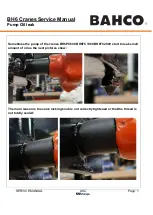
30
6.7 Reefing
6.8 Racing
Furlex is provided with a tack attachment which rotates in relation to the luff extrusion. When furling and
simultaneously applying a limited countertension in the sheet, the luff extrusion makes approximately one
revolution before the tack fitting starts rotating as well. The part of the sail with the biggest draft will in this
way be flattened. This makes the sail flat as the furling is continued. This funtion is referred to as the ”Free
turn”.
The best point of sail for reefing is on a close reach to beam reach. The wind will then partly fill the sail and
help to improve its shape when reefed.
If using a winch for the furling line, first check that there is no obstruction which may interrupt the furling
operation and possibly cause damage.
How to reef
:
1. Slacken off the leeward sheet until the sail just begins to flap along the luff.
2. Pull in the furling line so that the sail is furled and flattened out. Gradually slacken the sheet when furling.
3. Belay the furling line.
When the sail is reefed, it may be necessary to adjust the sheeting position.
The Furlex system can be converted from a furling system to a twin-groove racing headfoil by lowering the
halyard swivel below the sailfeeder. To remove the sailfeeder see chapter 7.4.1. Lower the halyard swivel to
the torque tube and refit the sail feeder.
The twin grooves now makes swift sail changes possible.
Fig. 6.7.a















































